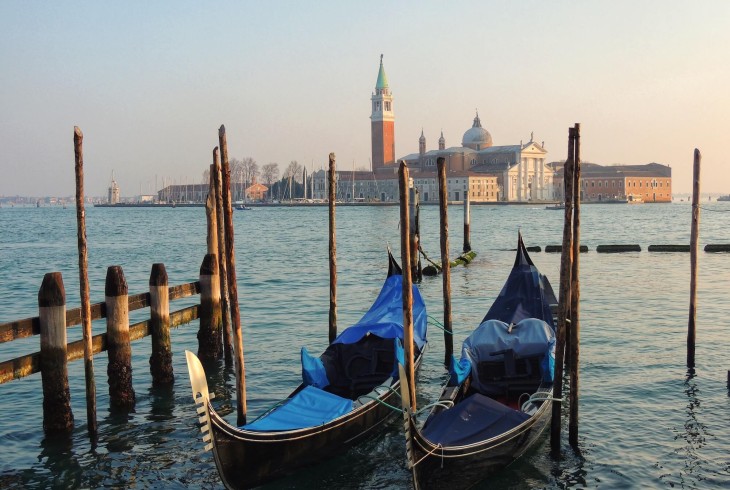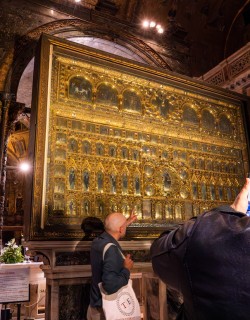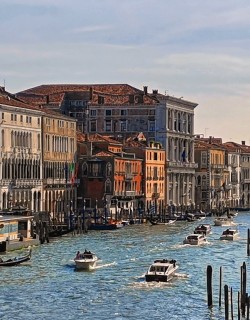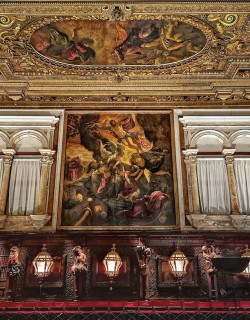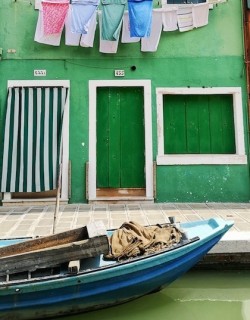There’s really only one way to travel in the Floating City. Four-wheeled transport is out for obvious reasons; to get around Venice, you’ll need to take to the water. And whilst the city’s network of water buses is efficient and economical, no trip to the city is complete without hitching a ride in a gondola. ‘The very soul and symbol of Venice,’ as author Jan Morris so eloquently describes it, the gondola is a peculiarly Venetian craft, its flat bottom and asymmetrical shape making it perfectly adapted to navigating the narrow and tortuous waterways of the city.
Take it from us: there’s nothing like sitting back and watching the magnificent palaces of Venice zip by as your little craft scuds along some picturesque canal, the gondola arcing delicately through the water in smooth curves propelled by the rhythmic movements of the gondolier’s long oar. But what do you really know about Venice’s iconic boat? Find out more with our Gondola FAQ!
So what exactly is a gondola?
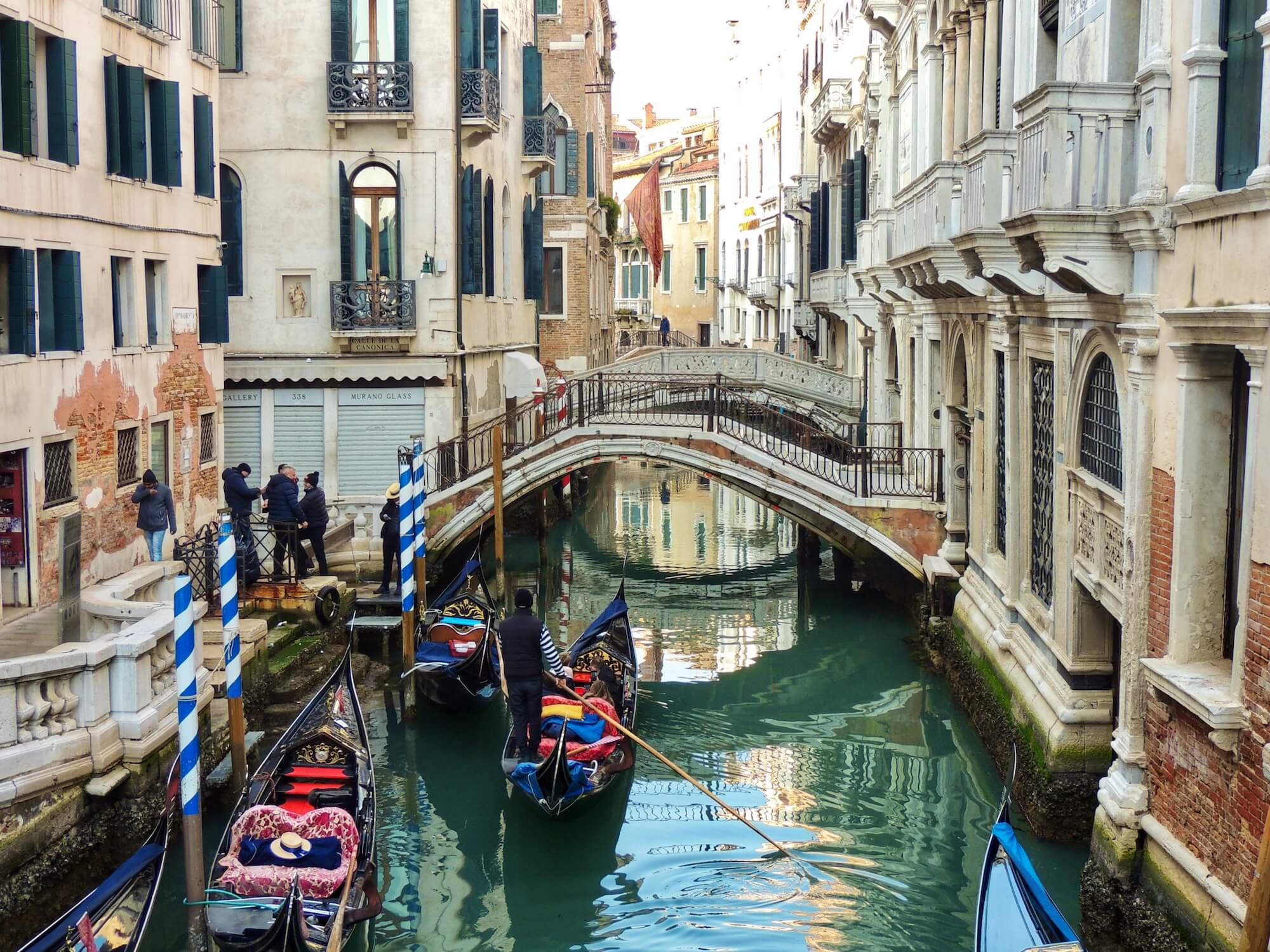
Unless you’ve been living under a rock, we’re pretty sure that you’ll instantly recognise the distinctive form of the iconic gondola when in Venice. But just so there’s no confusion, a gondola is a traditional, flat-bottomed single-oared Venetian rowing boat that has been used for centuries by citizens of the Floating City to effectively traverse their bewildering network of frequently narrow and shallow canals.
What is the history of the Venetian flat-bottomed boat?
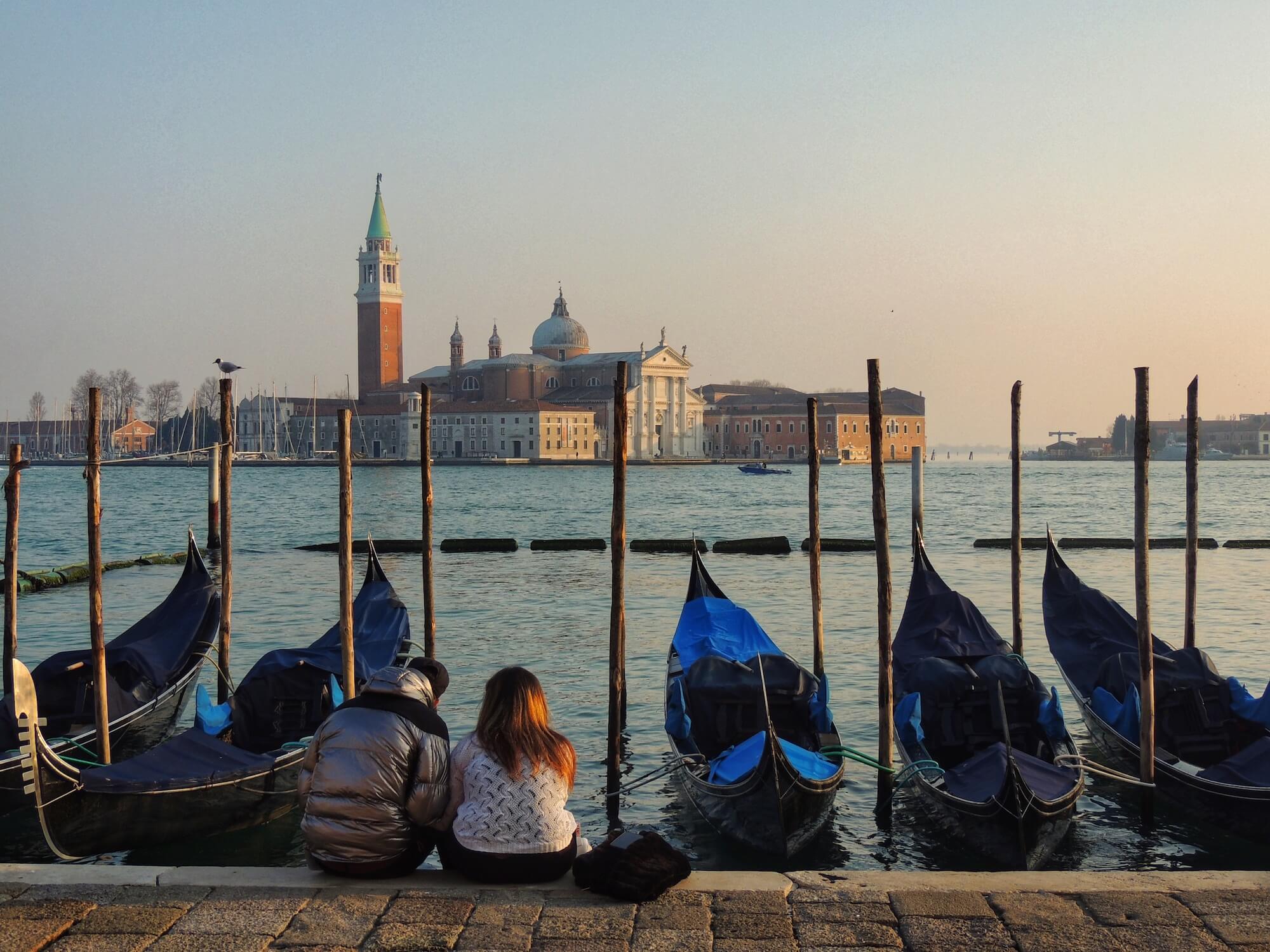
The distant origins of the unique boats are shrouded in mystery, although it is often thought that they derive from ancient Turkish prototypes. The gondola has links, too, with a kind of small watercraft found in Malta. In Venice, gondolas have a rich history dating back at least to the 11th century - the first known reference to a gondola comes from a decree issued by Doge Vitale Falier in 1094.
Today, it’s impossible for us to imagine just how vital the gondola was to the smooth functioning of life in the Serenissima. The unique topography of the city is made up of no fewer than 177 canals stretching over 28 snaking miles - that’s a lot of water to cover! Steam-powered boats only arrived in Venice in the 1880s (they are still called vaporetti, even though the steam aspect has long since been eclipsed) - before that, everyone went about their business either shunted about in a gondola or, in extremis, as a passenger on one of the large passenger boats that were laboriously rowed down the Grand Canal.
Amazingly, it's estimated that up to 10,000 of the vessels traversed the floating city in its 18th century heyday - imagine just how thronged the waterways would have been with gondolier jams! Today the number stands at a more modest 400, but the gondola remains undiminished as a proud symbol of Venice. More than merely practical objects, the lavish, hand-crafted boats also served as a vivid symbol of wealth and prestige for the Venetian elite.
Where does the word gondola come from?

The meaning and etymology of the word ‘gondola’ itself is another mystery. According to some it derives from the Greek word for cup, while others think it relates to the ancient Greek term for the boat with which the mythological Charon ferried dead souls across the river Styx. Others again see the origins of the term in a Byzantine Greek word meaning ‘small tail.’ Whatever the truth, one thing is not in doubt: these days the word ‘gondola’ immediately conjures up images of glittering canals in the Serenissima, vivid symbol of one of the world’s most beautiful cities.
How are gondolas designed?
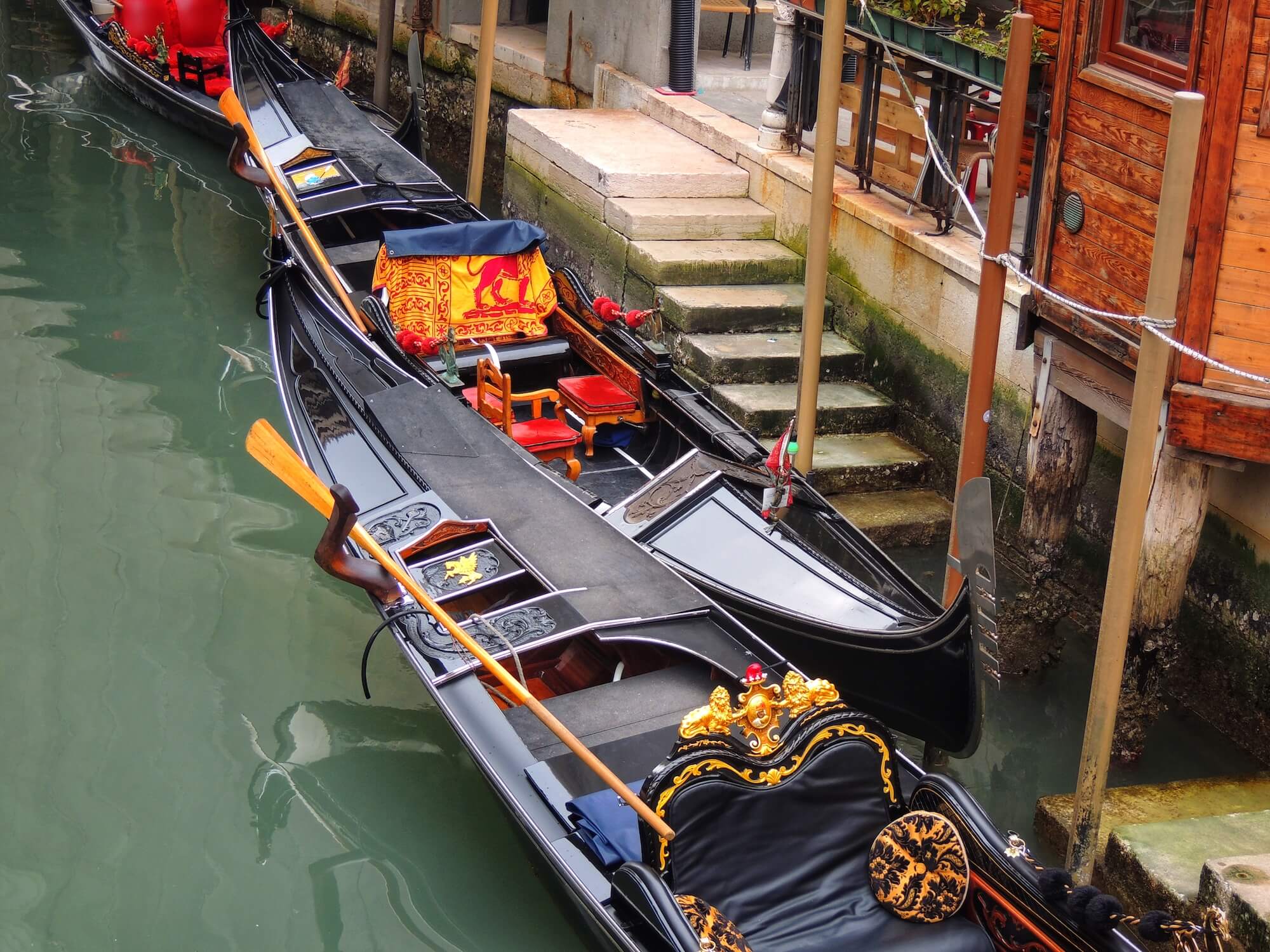
The form of the unique boat has been refined and perfected over many centuries, and all gondolas conform to an almost identical design: just under 11 metres long and 5 feet wide at its greatest breadth, tapering to a proud, aquiline prow that looks like the sharp beak of a noble bird of prey. They weigh around 500 kg and have a unique asymmetrical shape in which the left side of the boat is wider than the right, which helps to counter the uneven weight distribution caused by the heavy single oar with which the gondolier navigates. The oar sits in a special rest carved from walnut wood known as a forcola.
Affixed to the prow is a six-pronged steel object known as a ferro, which contributes mightily to the iconic profile of the boats. Nobody really knows what it’s for or what it represents, although one hypothesis maintains that the six teeth represent the six districts of Venice. It seems plausible that the ferro is the distant descendent of the decorated prows of ancient Roman and Phoenician galleys, and serves to help maintain the craft’s balance in the water.
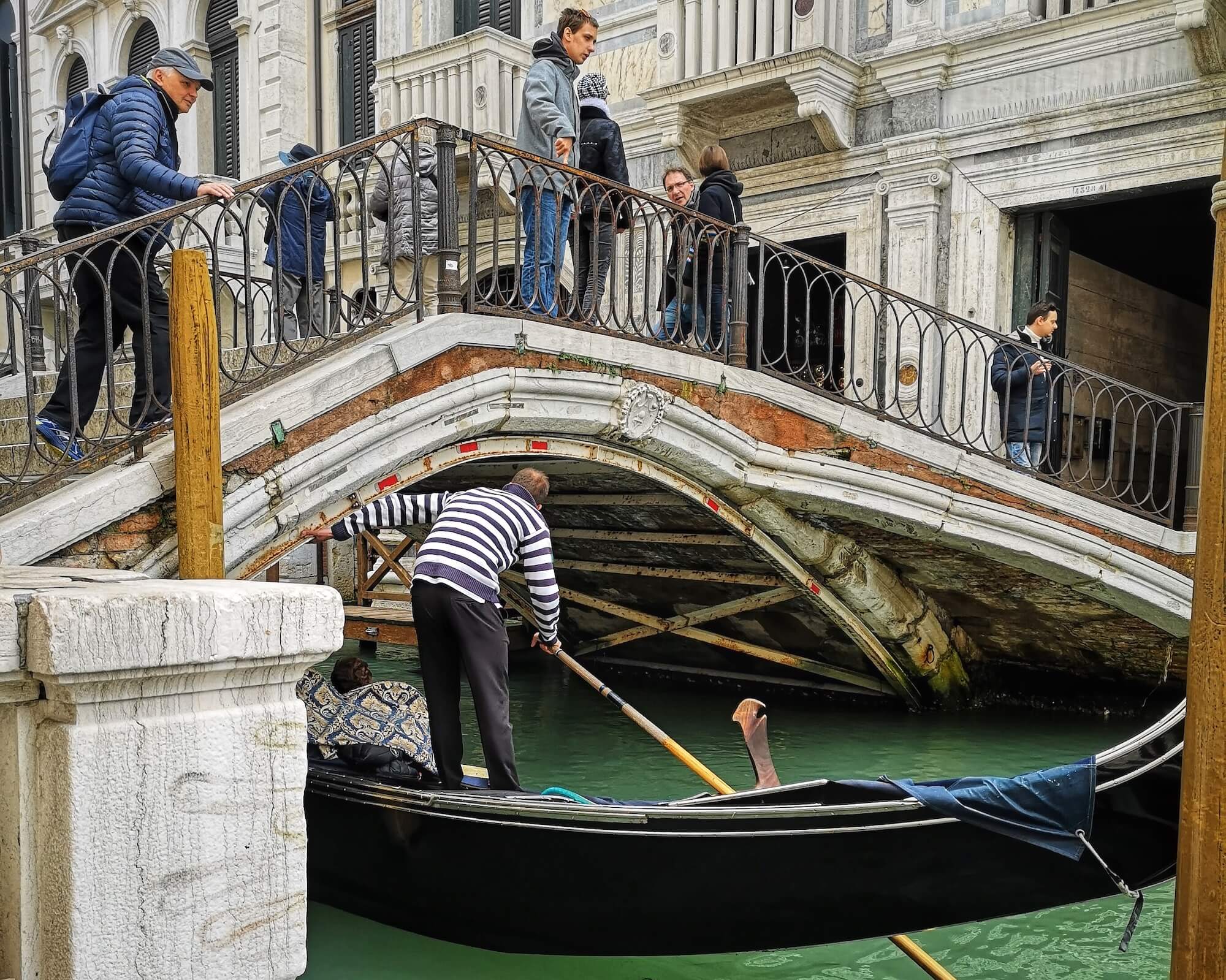
So well adapted is the craft to the unique challenges of the Venetian canals, that it is said that there are only two places that the boats can’t successfully navigate even when low tides reduce the flow of water in the canals to a trickle.
Unsurprisingly, the intricate gondolas are extremely expensive to build, and often take a year or more to complete. They are crafted from no fewer than 280 individual pieces of wood, and eight different types of timber are used in their construction including oak, walnut, cherry, pine and elm.
Why are gondolas always black?
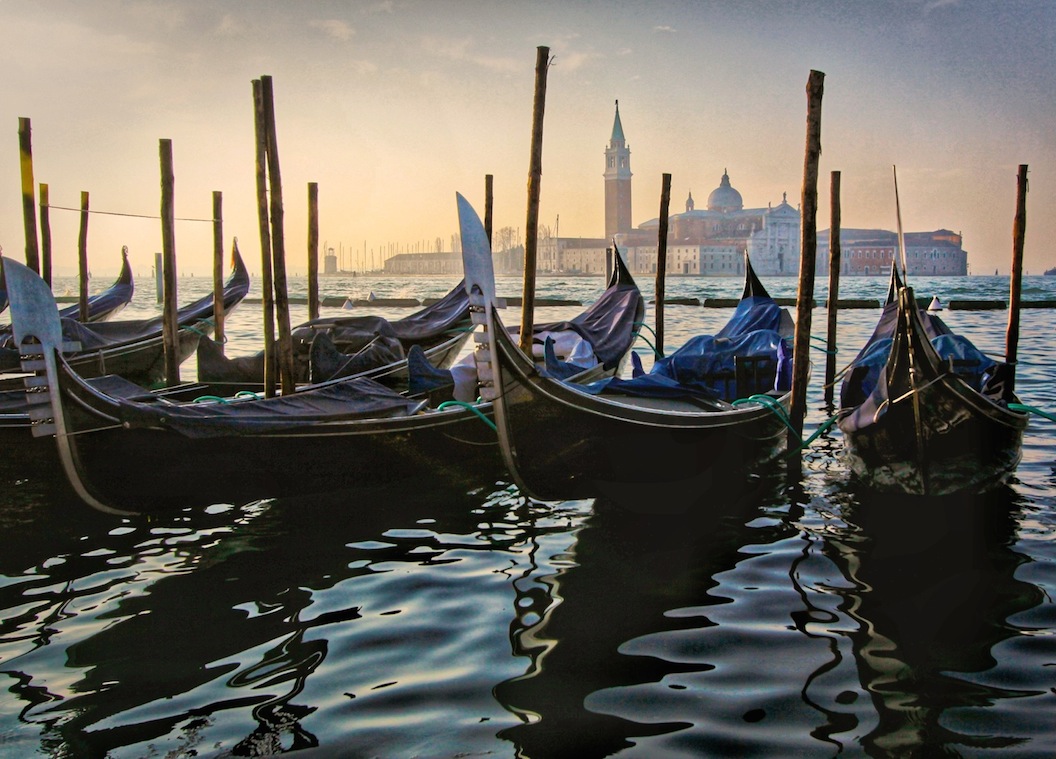
All gondolas are finished in a gleaming layer of black varnish - the strict sumptuary laws of the 16th century banned the practice of painting gondolas flashy colours, gilding them with gold leaf or covering them with precious fabrics; the sober schema stuck even after the sumptuary laws had had their day, and to this day the gondolas all wear their distinctive black coats - it adds to the charm and mystery of the boats to see them bobbing together at rest in the waters of the Grand Canal, lined up like a football team in their identical uniforms.
Haven’t I seen gondolas with cabins in paintings and movies?
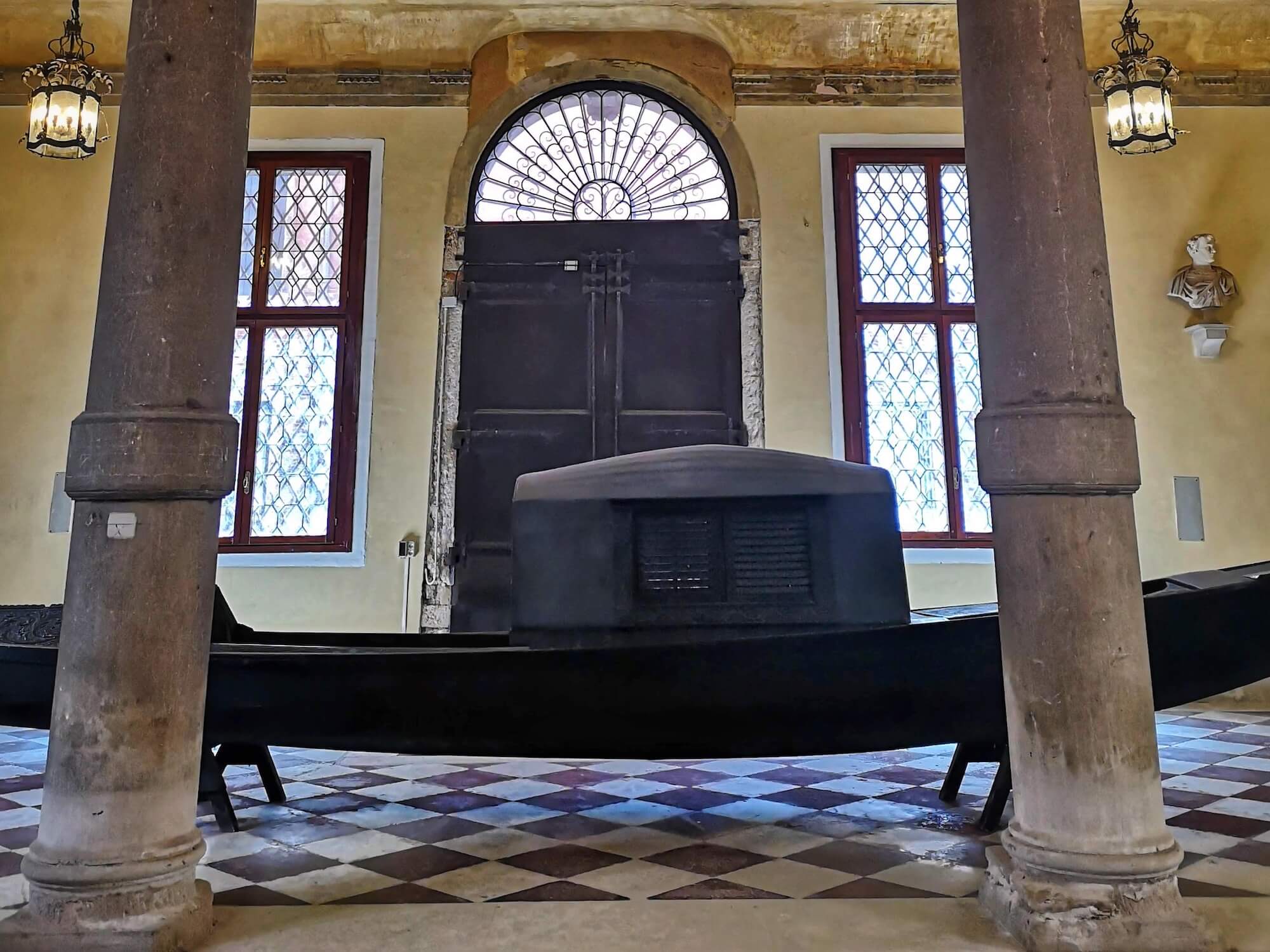
Yes! In the old days, beginning in the 16th century, gondolas used to have a black-painted cabin known as a felze at their sterns, windows veiled with velvet drapes to shield the goings on within the lavishly upholstered interior from the gaze of passersby. The implied secrecy of the felze played a role in fuelling breathless fantasies about the louche antics of the Venetian aristocracy. Henry James describes the intimacy of the private cabin in his early 20th-century Venetian travelogue, but today the boats are exclusively open-air - so forget about conducting any funny business whilst scudding along the water!
How are the gondolas maintained?
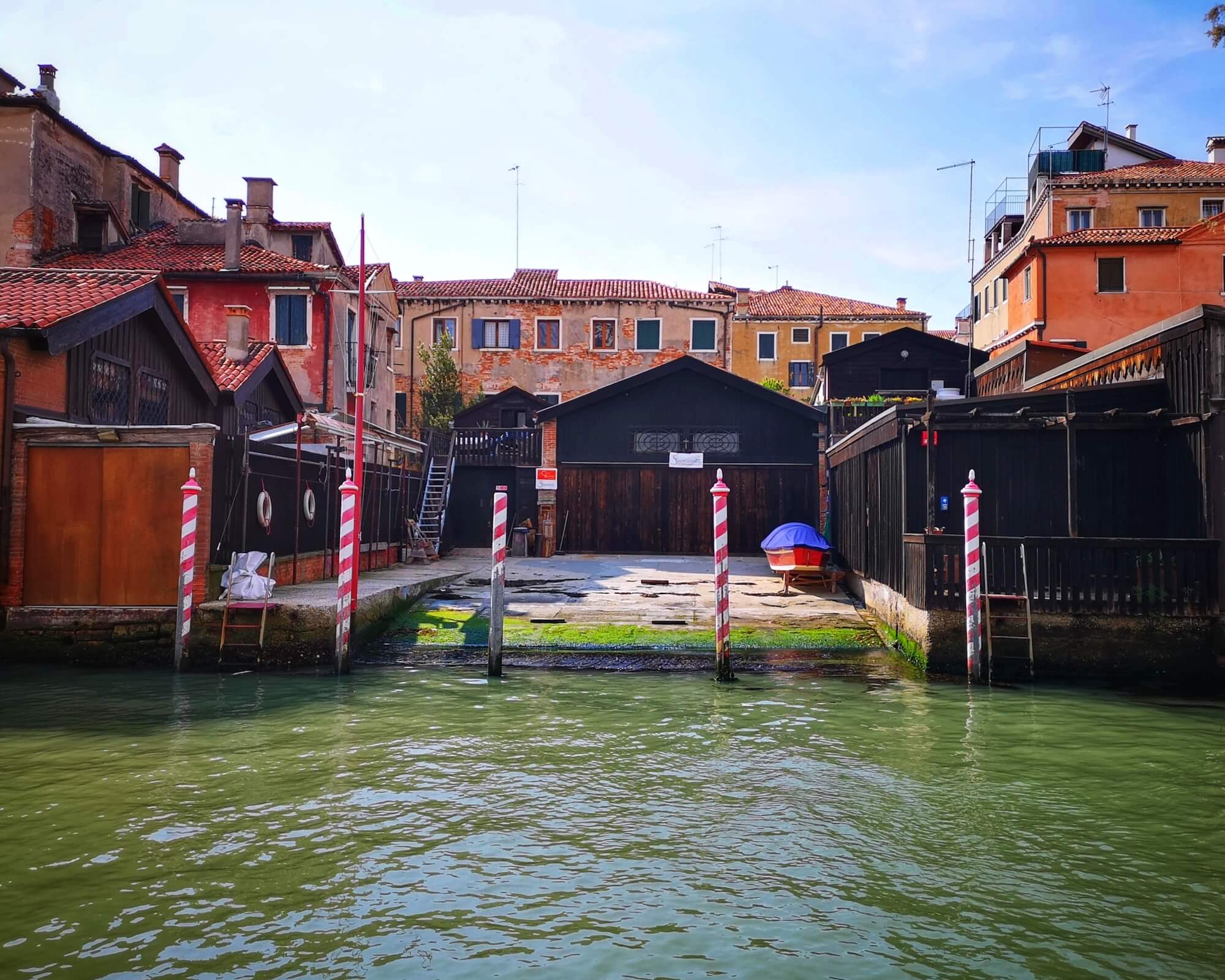
Gondolas require literally hundreds of hours of labour to create and just as many to maintain over their lifetimes, and the magic happens in workshops known as squeri, perched on the edges of canals and joined to the water by an inclined ramp that facilitates easy access to the boats. There are currently five historic squeri in operation, and they construct an average of 20 new gondolas each year.
In addition to keeping the ornamental details in tip-shop shape, the most regular and important piece of maintenance carried out in the squeri is the application of new layers of waterproof tar to the boats’ hulls. Today only five of these traditional workshops remain, but if you fancy a look at the artisans plying their time-honoured trade then head to the Osteria al Squero bar in the Dorsoduro district of the city, from where you can enjoy an unrivalled vantage point of the historic Squero di San Trovaso just across the canal, spritz in hand!
What are gondolas used for today?
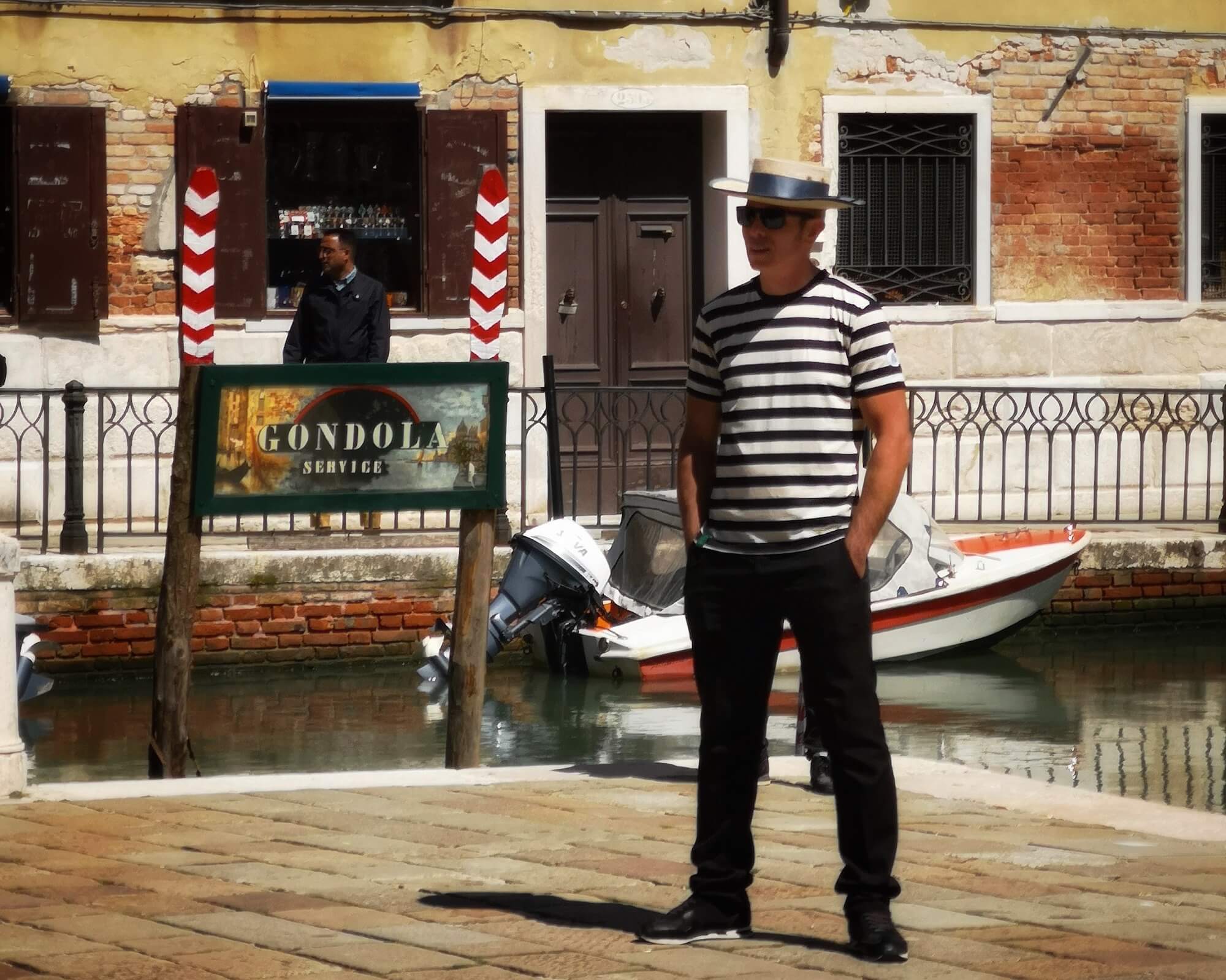
While they were once the city’s primary mode of transportation, gondolas are now mainly used for tourism purposes, and remain an extremely popular thing to do in Venice for good reason: there is something very special about seeing Venice from the unique vantage point of the city’s waterways.
With their jauntily striped shirts and distinctive wide-brimmed hats, the highly-skilled gondoliers themselves are a delightfully picturesque part of the furniture in the Floating City, and their characteristic cries - premi and stali to warn other gondoliers as to their intention to move to the left or the right of a waterway, or the simpler òhe - ‘watch out!’ echo along the canals and between the high buildings all around, contributing mightily to the suggestive soundscape of Venice.
Beyond tourism, gondolas are still used for one practical purpose - they remain the principal means of public transport from one side of the wide grand canal - 76 yards across at its greatest extent - to the other. These gondola ferries, or traghetti da parada, can accommodate 14 passengers at a time, and although it doesn’t take long at a cost of only €2 it’s a great way to experience what it’s like to ride in a gondola without committing to a full tour. The boats also regularly feature in weddings and funerals (think of the famous scene in 70s horror classic Don’t Look Now). They are also used in special ceremonial events like regattas and during the carnival each Spring.
How can you hire a gondola today?
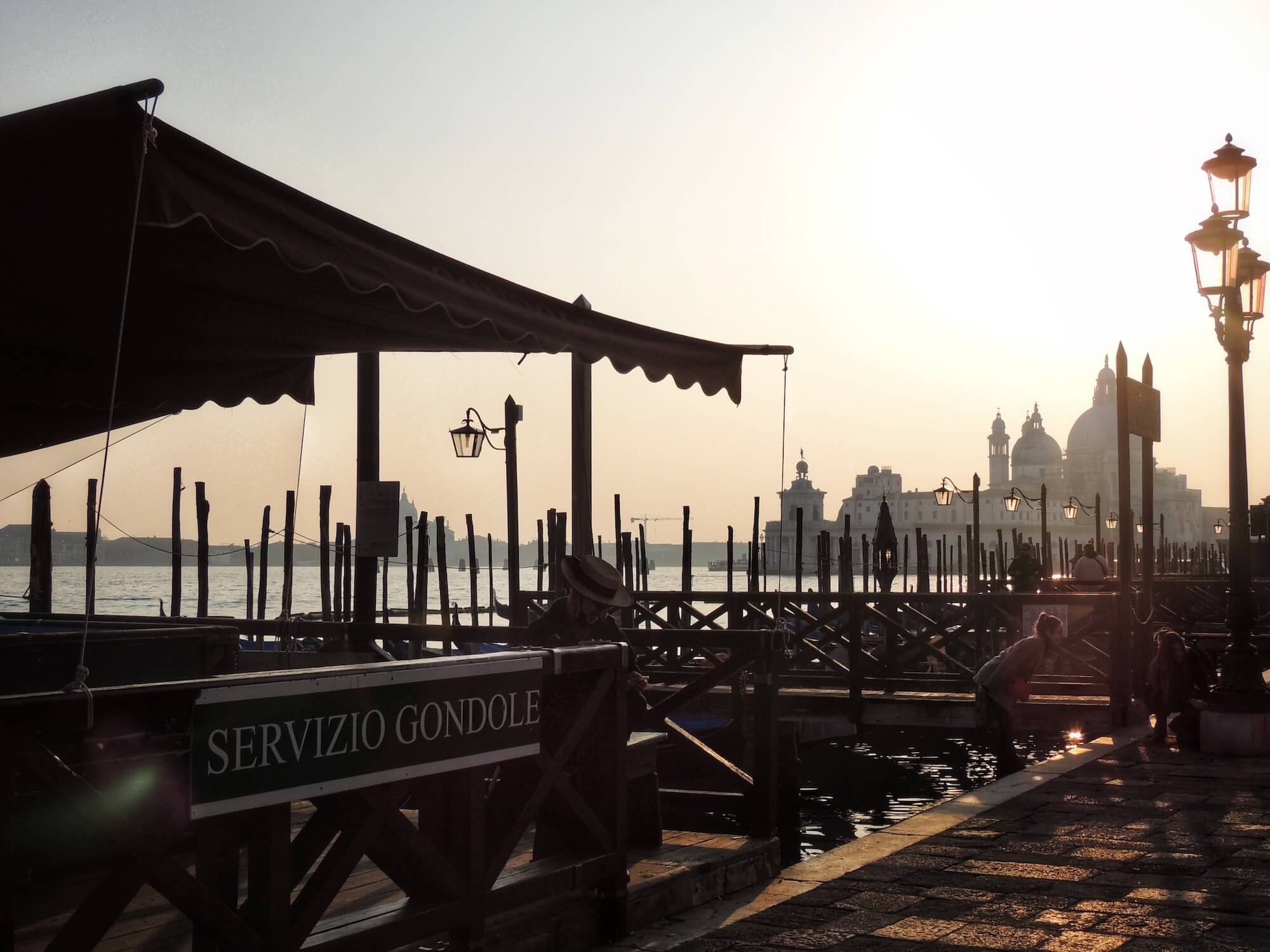
Hiring a gondola in Venice is relatively straightforward. You can find licensed gondoliers at various points along the canals, particularly in popular areas like St. Mark's Square or near major hotels but also in quieter parts of the cityparts of the city. Rates are standardised, and are levied regardless of the number of passengers: from 1st November 2023 the cost is €90.00 for a 30-minute ride, or €110 for a ride after 7 PM. Nonetheless, it’s advisable to confirm the price and duration of the ride before embarking. It’s also not unusual to be offered a lower than standard rate during the off-season and away from the tourist hotspots. You don’t need to tip your gondolier.
Through Eternity Tours offer a range of expert-led Venice small group tours and private itineraries, from tours of Saint Mark’s basilica and the Doge’s Palace to off-the-beaten track sites and visits to the islands of the Venetian lagoon. Check out our Venice tours page for more, and get planning your perfect trip to the Floating City!
